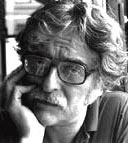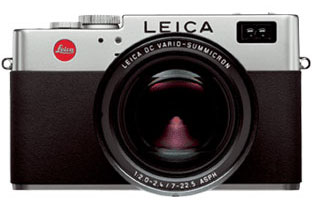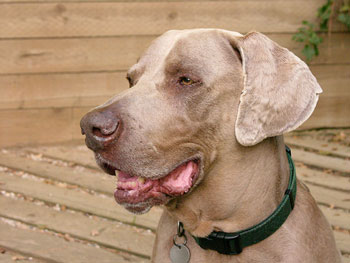 |
→ April 2004 Contents → Camera Corner
|
Camera Corner: The Leica Digilux 2
April 2004
|
 |
||||
|
Dirck's favorite new camera introduced at the recent PMA trade show in Las Vegas was the Leitz Digilux 2. Here's a quote from his show report. "We've saved the best for last... When will there finally be a Leica Digital camera? Well, the answer is now."
Leitz was gracious enough to send a Digilux to us for evaluation. The most obvious difference between the Digilux and many other small, self-contained cameras (both film and digital) is a conventional shutter speed dial and f/stop, focus and zoom rings. What a pleasure to be able to excercise the basic camera controls quickly and efficiently without punching through a series of LCD menus. With the shutter speed dial, f/stop and focusing rings set to "A" you have a programmed automation typical of these cameras. A twist of the shutter speed dial and you have shutter priority automation. A twist of the f/stop ring and you have aperture priority automation. Move both controls and you are in full manual mode. Move the focusing ring off of a detented "A" and You're manually focusing. But when you move the focusing ring, the central portion of the viewfinder screen is suddenly magnified allowing for easy focus. Combined with an adustable diopter eyepiece, it makes manual focus exceptionally accurate and, in some cases, preferable to auto focus. In relatively static situations, I often get better results on manual exposure than on automatic. While on auto, slight reframing of the image can cause a shift in exposures that is detrimental. By shooting on manual and previewing on the large LCD screen on the back of the camera, much as you might preview a Polaroid in the old days, you are able to fine tune the results to a personal preference that is repeatable. The LCD on the back of the camera is large (2.5 inches) and remains legible under relatively bright light. But, in situations where it is impossible to view the exposed LCD clearly, you can look at the recorded image through the camera viewfinder. In both cases you can magnify the image to check focus and detail. On the back of the camera, surrounding the LCD screen are the buttons that throw the ìdigital controlsî such as white balance, file size (including a raw file), effective ISO, spot metering etc.. In other words, the "set it and forget it" controls that you don't use while you're shooting. Since the viewfinder image is also an LCD, these controls can also be seen in the viewfinder. More important, you can toggle through a variety of viewfinder images - plain; gridded; one with mode, ISO, flash, metering pattern (spot, averaging, matrix) and pixel count at the edge of the frame and one that contains a histogram. Most novel and most welcome, the plain frame with nothing in it but the picture. My favorite feature - the built-in flash. This is a built-in with a difference; it swivels to provide bounce flash. In other words, when you run out of available light, you can still take pictures that look as if they were taken with available light without an independant accessory flash. The built-in flash can be programmed to provide flash, flash with red-eye reduction, fill flash and flash with long shutter speeds. There is an accessory shoe/hot shoe that can take a seperate flash. Actually, I found it most useful as a way to fix a pc outlet to the camera and use it with big studio flash units. This is a once over lightly with a camera whose features are detailed in an 11 ounce instruction book (only 5 1/2 ounces are in English). More important, is it a camera a professional would want to use?
The number that will attract the most attention is the 5 megapixel format. In a world that seems to judge quality by megapixels, can the Digilux have the image quality of one of the popular 6 megapixel cameras? Yes. We printed up some full frame images, full size on 13x19 paper. There was no shot in which the Digilux image was technically inferior to a comparison shot made with a camera with a 6 megapixel sensor. Those of you who have read this column for awhile may remember that many of our "lens tests" featured Marilyn, our German Shepard. When Marilyn died, Dave, a Weimeraner who found himself in the pound after the death of his mistress, came to us from a local dog rescue group. Dave is an even better lens test. His fur provides a low contrast, high spatial frequency target. His love of long walks places that target in a variety of photographic conditions. A small jpeg of Dave is hardly going to show you what a Digilux is capable of. But, if you trust me that a big print does, you at least get to see a nice dog. The Leitz Digilux 2 is also available as the Panasonic Lumix. The Leitz is more expensive, but comes with a more elaborate software package and a bigger memory card. It comes with a 64 MB SD memory card. This can get you a fair number of compressed jpegs, but only 5 in the raw format. Run out and buy the biggest memory cards you can find if you want to do this camera justice. For complete technical specs and pictures of the camera, go to the Leitz website at http://www.leica-camera.com/index_e.html. There has been much said about this being the "digital Leica" No, itís a very good digital point and push from Leitz. Leitz has said they are working on a digital Leica in the M style and will show it within the "Leetz." The "Leetz" is a unit of time that is completely flexible and an example of how the theory of relativity can be applied to the introduction of a Leitz product. Until then, Cosina has made a digital body that resembles the rangefinder bodies they make that accept Leica rangefinder lenses and their own lenses. Shown under glass in Las Vegas, it will be marketed by Epson. Essentially, the professional level digital cameras used by photojournalists were patterned after 35mm SLRís, probably the most versatile type of camera for this work. But with the introduction of digital rangefinder cameras and a number of professional level point-and-pushes we are beginning to see the variety of specialized photojournalistic tools that once was the province of film enter the world of digital.
© Bill Pierce
Contributing Writer
|
|||||
Back to April 2004 Contents |
|

